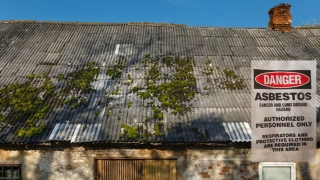
The first stage is building safety and fire prevention remain crucial to the safety of people’s lives and property. One of the hazards in construction is not often recognised: that is the use of flammable cladding, as well as other defects in the construction itself, which these defects can significantly intensify the risk of fire.
While these may be necessary to cover under risk assessment, what often pivots against building safety measures are costs with the owners and managers.
Understanding the Flammable Cladding
“Flammable cladding” refers to buildings with outer surfaces that consist of materials that quickly propagate flames across a facade without much internal containment, as in Aluminium Composite Panels (ACP) with polyethylene core. These beauty-gracing fire hazards are among the most dangerous products used in construction today.
Replacing flammable cladding with fire-resistant options in most districts is a regulatory requirement and also a preventive measure that goes a long way in saving lives and property.
Most Common Construction Flaws That Lead to Fire Hazard
Construction faults involve design failures or unacceptable materials, leading to significant increments in fire hazards. Here are some common problems:
– Non-fire Reduction Materials: The use of combustible building materials increases fire speed. It is necessary to adopt fire-resistant alternative construction materials.
– Absence of Fire Suppression Systems: Buildings that lack working sprinklers or fire extinguishers or suppress anything will involve way more danger than those not doing so. Regular maintenance and testing of fires and gas-related items are also important.
The Cost of Fire Safety Improvements
Costs of Fire Safety Improvement Upgrades to fire safe standards involve huge capital outlays, and property owners and managers have to balance benefits before comparing them with costs for inaction.
- Material Costs Replacing combustible cladding with fire-resisting materials can be expensive, especially in tall buildings. Costs can be reckoned in savings from a low maintenance and replacement burden over time if durable, compliant materials are used.
- Costs of Retrofitting Modern fire protection features such as sprinklers and alarms add to the long list of expenses incurred on retrofitting old buildings to meet current standards. A portion of retrofitting costs includes installation of equipment and pipelines; bringing them to safety compliance, as well as labors and certifications.
- Ongoing Maintenance. These systems require routine inspections and tests, and sometimes repairs. Budgeting for these ongoing costs is crucial in ensuring that systems are ready to serve their purpose when needed.
- Potentially Available Aid for Funding. The governments and local authorities provide, in some regions, grants, interest-free loans, tax incentives for property owners, or either incentive for improving or increasing fire safety.
- Cost of Inaction The not-as-really-some-action approach can have impacts like the following:
Property Value Loss: Buildings that do not comply have reduced market value or difficulty selling or leasing property.
Fines and Legal Penalties: Non-compliance with regulations can result in fines of considerable size and legal action.
Reputation Damage: Building owners put themselves at risk to lose customers, clients, or the community at large.
Ways to Balance Safety and Cost
Although improvements in fire safety come at a cost, they provide effective solutions in different ways:
Identify Critical Areas: Focus on priority: urgent dangers close burning material or replace passages.
Upgrade in Phases: Change things little by little for costly assignment effects.
Seek Expert Assistance: Hire fire safety engineers and compliance professionals for identification so that all safety standards benefit the client without spending extra money.
Combine to Use Tough Materials: Invest in those materials and systems that last longer to reduce maintenance outgoings in future.
Technology: Modern technology in suppression or detection still requires a lot of upfront investment, but it is worth investing in savings over the long term since there are efficiencies and reliability.
Building Safety is a Shared Responsibility.
It starts actual risks from building defects, flammable cladding, and inadequate system dependencies. It might appear costly, but that cost pales compared to inaction costs in human life and property loss.
Being proactive while keeping safety priorities and budget considerations, while researching funding options, can help property owners and managers afford meaningful building safety enhancements without giving up without cost.
Fire safety is a law but an investment in performing the duty of saving lives, property, and heritage of the community for future generations.

Fire safety is one of the topics in the Diploma of Building and Construction, focusing on the identification and management of critical risks. The course provides learners with the skills to assess fire safety concerns, implement safety measures, and ensure compliance with regulations. By addressing these issues, the course prepares learners to make informed decisions that contribute to building safer structures in the construction industry.






